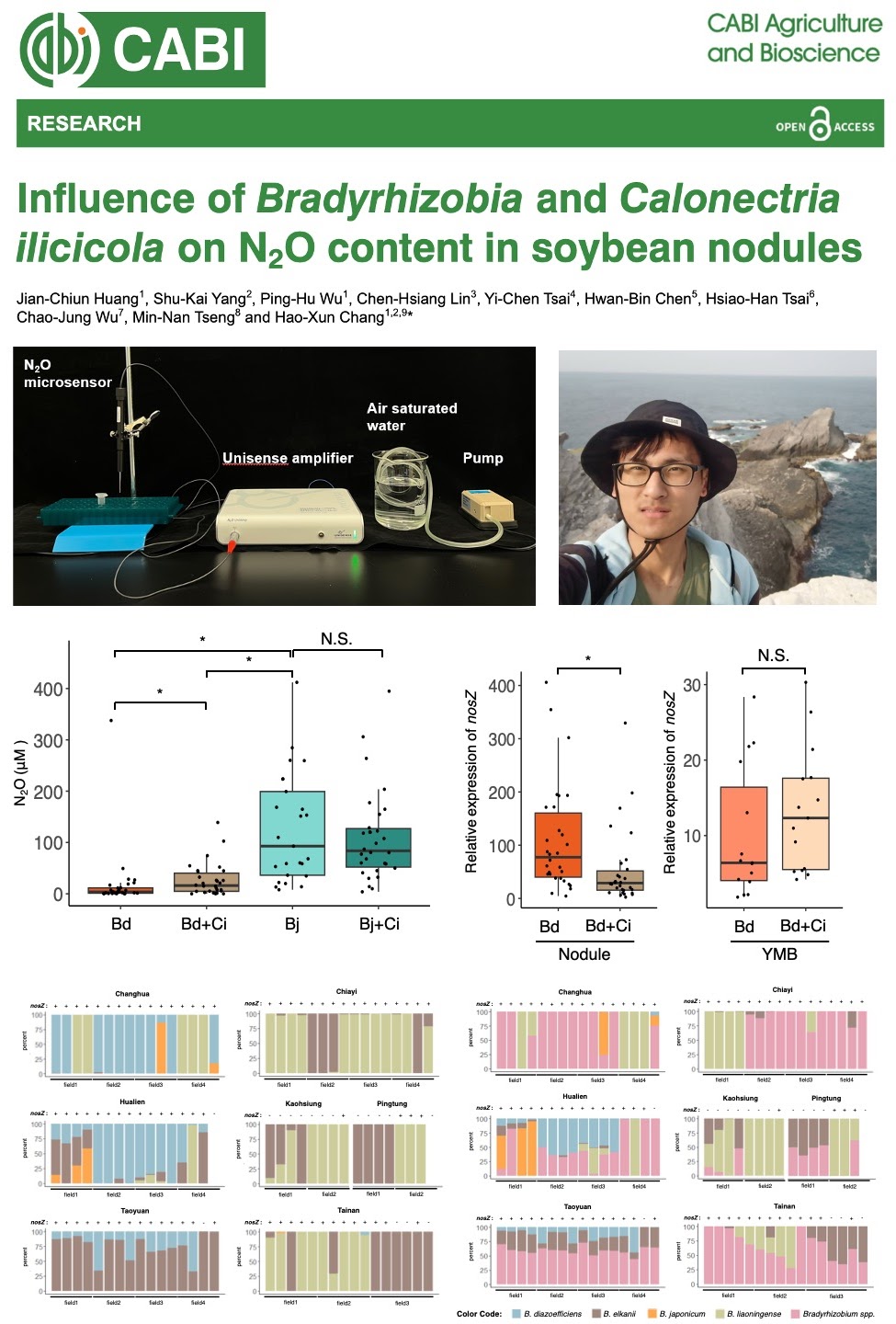Greenhouse gases (CO2, CH4, N2O) and global warming have intensified climate change, and N2O emissions are closely linked to agriculture and nitrogen fertilizer application. Therefore, reducing agricultural N2O emissions aligns with the core objectives of agricultural net-zero.
Soybean (Glycine max) forms root nodules with Bradyrhizobia, which facilitate biological nitrogen fixation. However, some rhizobia lack the nosZ gene to complete the final step of denitrification, leading to the production of N2O instead of N2. M.S. student Jian-Chiun Huang developed an N2O microelectrode system and found that Calonectria ilicicola not only reduced the nodule number and size, but also increased N2O content in nodules likely via the interference of nosZ gene expression. Fortunately, when the nosZ gene is present, C. ilicicola-induced N2O changes were insignificant. This study further collaborated with agricultural research stations in Hualien, Taoyuan, Taichung, Tainan, Kaohsiung, and the Chiayi Agricultural Experiment Station to sample and assess the prevalence of the nosZ gene in nodules. The overall findings suggest to prioritize the nodule formation with nosZ+ rhizobia, followed by minimizing the potential negative impact of soil-borne fungi.
The research findings have been published in a journal of the Centre for Agriculture and Bioscience International (CABI), the CABI Agriculture and Bioscience. link
